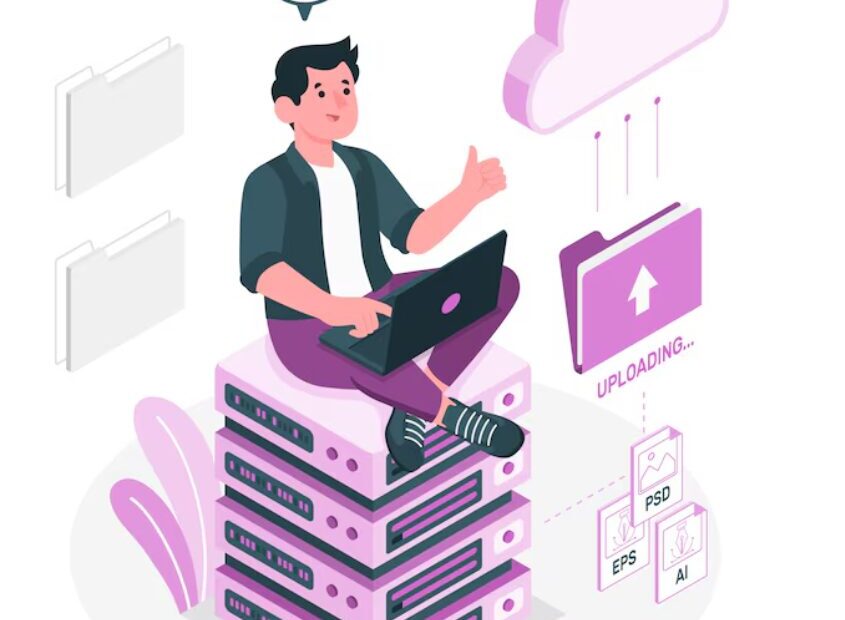Serverless computing represents a paradigm shift in cloud computing. It abstracts server management, allowing developers to focus on writing code without worrying about the underlying infrastructure. This article provides an in-depth overview of serverless computing, its benefits, and practical use cases.
Enozom‘s adoption of serverless computing in cloud development has enabled the company to deliver scalable, cost-effective, and efficient solutions to its clients. By leveraging the benefits of serverless architecture, Enozom can focus on developing high-quality applications while reducing operational complexities and costs. As serverless technology continues to evolve, Enozom remains at the forefront of innovation, driving excellence in cloud development.
What is Serverless Computing?
Serverless computing is a cloud computing execution model where the cloud provider dynamically manages the allocation and provisioning of servers. Despite its name, serverless computing does involve servers, but they are abstracted away from developers. Instead of managing servers, developers write and deploy code in the form of functions, which are executed on demand.
Popular serverless platforms include:
- AWS Lambda
- Azure Functions
- Google Cloud Functions
- IBM Cloud Functions
Benefits of Serverless Computing
1. Cost Efficiency
- Pay-as-You-Go: Billing is based on the actual usage of resources, measured in function invocations and execution time, rather than pre-allocated server capacity.
- No Idle Costs: Charges are incurred only when the code is running, eliminating costs associated with idle server time.
2. Scalability
- Automatic Scaling: Serverless platforms automatically scale the infrastructure in response to the number of incoming requests. This ensures that the application can handle varying loads without manual intervention.
- Concurrency Management: Built-in concurrency controls manage the execution of functions, providing consistent performance under high load.
3. Simplified Operations
- No Server Management: Developers do not need to manage or maintain servers, operating systems, or runtime environments, allowing them to focus purely on code and business logic.
- Reduced DevOps Overhead: With the cloud provider handling the infrastructure, the need for extensive DevOps practices is minimized.
4. Faster Time to Market
- Rapid Development: Developers can deploy and iterate on functions quickly, reducing the time required to bring new features and applications to market.
- Microservices-Friendly: Serverless architectures align well with microservices, enabling independent deployment and scaling of different parts of an application.
5. Enhanced Developer Productivity
- Focus on Core Logic: Freed from the burden of managing infrastructure, developers can dedicate more time to writing and improving application logic.
- Integration with Other Services: Serverless platforms often provide seamless integration with other cloud services, such as databases, authentication, and messaging systems, streamlining the development process.
1. Web and Mobile Backend
- API Gateways: Serverless functions can be used to handle HTTP requests, making them ideal for building RESTful APIs for web and mobile applications.
- Real-Time Data Processing: Applications requiring real-time data processing, such as chat applications or real-time analytics, can leverage serverless functions for event-driven processing.
2. Event-Driven Applications
- IoT Data Processing: Serverless functions can process data from IoT devices, responding to events such as sensor readings or device status changes.
- File Processing: Functions can be triggered by file uploads to cloud storage, performing tasks such as image resizing, video encoding, or data extraction.
3. Scheduled Tasks
- Cron Jobs: Serverless platforms support scheduled function execution, making them suitable for running periodic tasks like backups, report generation, or system maintenance.
- Automated Workflows: Functions can be orchestrated to automate complex workflows, such as data pipelines or CI/CD processes.
4. Microservices Architecture
- Decomposing Monoliths: Large monolithic applications can be broken down into smaller, independently deployable serverless functions, improving maintainability and scalability.
- Function as a Service (FaaS): Each microservice can be implemented as a function, allowing for modular, loosely coupled application components.
5. Data Transformation and ETL
- Data Ingestion: Serverless functions can be used to ingest data from various sources, transform it, and load it into databases or data warehouses.
- Stream Processing: Functions can process streaming data in real-time, applying transformations, aggregations, or filtering as needed.
Challenges and Considerations
1. Cold Start Latency
- Explanation: Serverless functions may experience latency during their initial invocation, known as a “cold start,” as the cloud provider provisions resources.
- Mitigation: Strategies such as keeping functions warm or optimizing function code can help reduce cold start times.
2. Vendor Lock-In
- Explanation: Relying heavily on a specific serverless platform’s services and APIs can make it challenging to migrate to another provider.
- Mitigation: Use standard libraries and abstractions, and design for portability where possible.
3. Complexity in Debugging and Monitoring
- Explanation: Distributed and event-driven architectures can complicate debugging and monitoring.
- Mitigation: Employ advanced logging, monitoring, and tracing tools to gain visibility into function execution and performance.
4. Security Concerns
- Explanation: The abstracted nature of serverless can introduce security risks, such as vulnerabilities in third-party dependencies or insufficient access controls.
- Mitigation: Follow best practices for securing serverless applications, including least privilege access, dependency management, and regular security audits.
Conclusion
Serverless computing offers a powerful model for building and deploying applications with high scalability, cost efficiency, and reduced operational complexity. By abstracting server management, it allows developers to focus on writing code and delivering value faster. Despite some challenges, the benefits of serverless computing make it a compelling choice for a wide range of use cases, from web and mobile backends to event-driven applications and microservices architectures. As the technology continues to evolve, its adoption is likely to grow, driving innovation and efficiency in software development.
